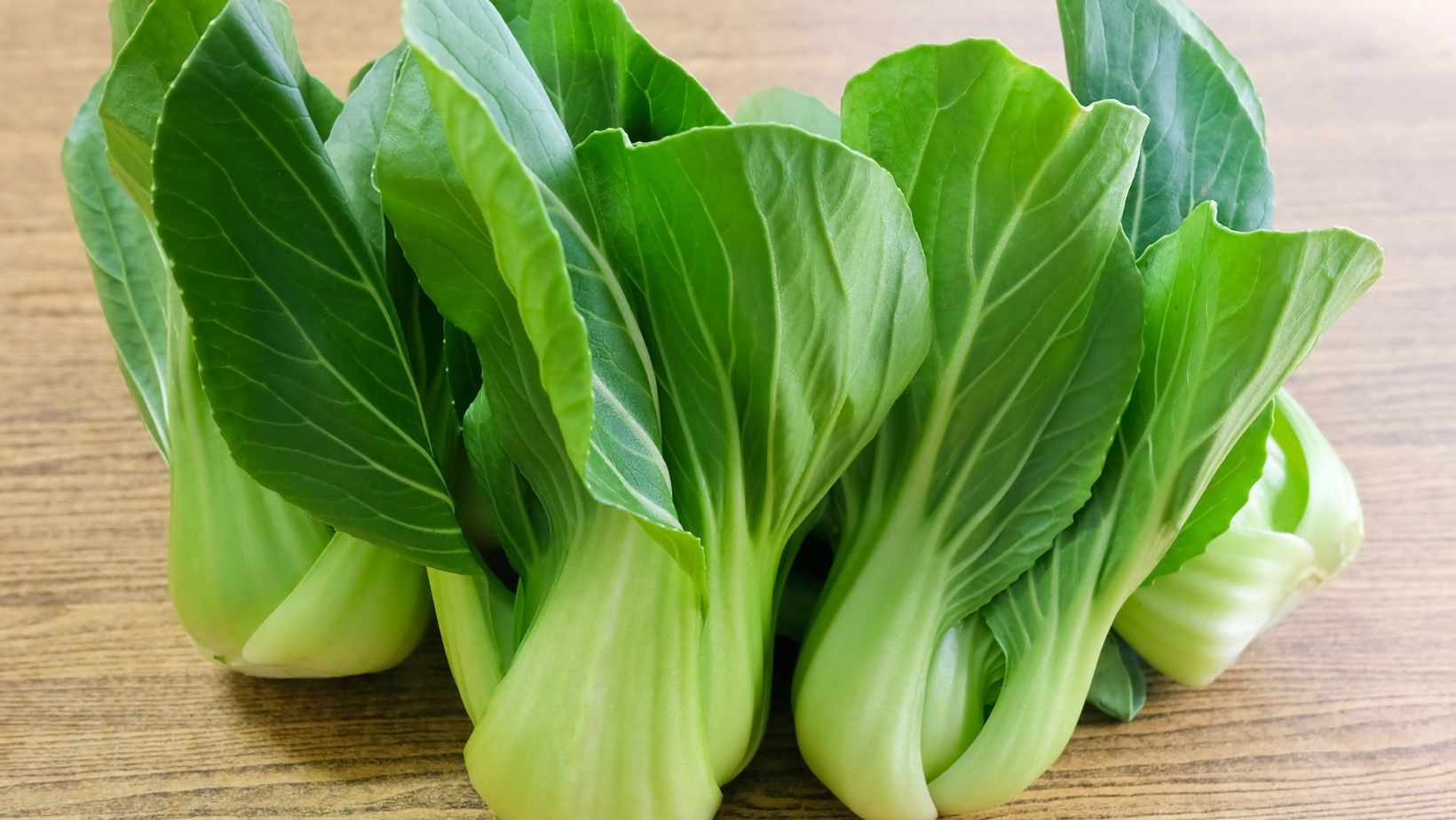Mustard greens and collard greens are leafy green vegetables having many differences in terms of nutrition and flavor. Mustard greens have a tasty, sharp bitterness with a peppery flavor and are rich in vitamins C, K, and A. Collard greens have a mild taste with a slightly sweet undertone, and they’re packed with vitamins A, C, E, K as well as high fiber content.
Here is a visually appealing table for better understanding:
| Greens | Flavor Profile | Nutritional Value |
| Mustard Greens | Bitter with Peppery taste | Rich in Vitamin C, K, and A |
| Collard Greens | Mild & Sweet undertone | Packed with Vitamins A,C,E,K |
It is worth noting that both are cruciferous vegetables that share similarities like being low in calories yet densely packed with nutrients while being rich in antioxidants. However, distinct differences lie in their flavors as well as nutritional values.
If you’re looking to augment your meals’ nutritional value by incorporating some greens into your diet but unsure which option to pick up, always remember to take both personal preference and recommended daily intake requirements into consideration while making the choice for your optimum health.
Don’t hesitate to add some vibrant greens’ goodness to your daily meals- because what could be scarier than missing out on their endless health benefits?
Looking for a veggie with more bite? Choose mustard greens. But if you want something more mild, collard greens have got your back (or shall we say, your taste buds).
Differences Between Mustard Greens And Collard Greens
To understand the differences between mustard greens and collard greens, you need to learn about the varieties and flavor profiles of each vegetable. Additionally, the nutritional differences between these greens should be explored. In this section, we’ll provide you with insights into the distinct characteristics of both greens by talking about the varieties of mustard greens and collard greens, their flavor profiles, and the nutritional benefits they provide.
Varieties of Mustard Greens And Collard Greens
Mustard greens and collard greens have some significant differences in terms of their taste, texture and nutritional profile. Mustard greens have a slightly bitter, peppery taste and come in several varieties such as curly-leaf, green wave, southern giant curled, broad-leafed mustard and red mustard. On the other hand, collard greens have a milder flavor with a sweet aftertaste. Some popular varieties of collard greens include Georgia southern, Morris heading and Vates.
To provide more information about these greens, here is a table that highlights their different nutritional facts and characteristics:
| Mustard Greens | Collard Greens | |
| Taste | Slightly bitter, peppery | Mild with sweet aftertaste |
| Nutritional Benefits | High in vitamins A, C and K; rich in antioxidants; may reduce cancer risk; potential to improve heart health. | Good source of vitamins A and C; rich in fiber; protects against inflammation; promotes healthy digestion. |
| Cooking Tips | Braise quickly or sauté briefly for maximum flavor; treat like spinach or kale. Fry with bacon or ham hocks for added depth of flavor. Rinds can be removed for smoother texture. Ribs are often discarded as they can be tough to eat but can also be cooked if prepared properly. | Cut out the thicker center stalks, which take longer to cook than the leaves. Braise slowly or simmer in soups and stews for tender texture. Your table can be more informative and creative by nutritionists or chefs. |
Interestingly, mustard greens are usually eaten raw in salads while collard greens are cooked more often. As for their popularity, both greens are staples in soul food cuisine.
To note some unique details about both these greens, they are versatile and can be used in numerous dishes from soups to stir-fries to wraps. Mustard greens also have a sharper taste which makes them great to add some bite to sandwiches and burgers. Collard greens can be used as a wrap instead of tortillas or bread for a healthy low-carb option.
Move over taste buds, the flavor profiles of mustard and collard greens are here to shake things up.
Flavor Profiles of Mustard Greens And Collard Greens
Mustard greens and collard greens have distinct flavor profiles that make them stand out from each other. To understand their differences in taste, we can look at their unique properties side by side.
| Mustard Greens | Collard Greens | |
| Flavor Profile | Bitter, spicy and pungent with a hint of sweetness. Has a stronger flavor compared to collard greens. | Mild with earthy and nutty undertones. Slightly sweet but not as strong as mustard greens. |
| Taste Texture | Tender leaves with a crisp texture that adds a crunch in salads or sandwiches. When cooked, it softens and becomes tender. | More fibrous compared to mustard greens but still has a dense texture. Best prepared when boiled or sautéed for longer periods to soften the leaves adequately. |
Apart from these key differences, collard greens contain more calcium compared to mustard greens making them ideal for bone health protection while mustard greens have less fat content which makes them more recommended for weight loss purposes.
To enjoy the benefits of both leafy greens, try adding them to your diet today! Don’t miss out on the unique flavors each has to offer.
Get your greens and get your gains, but choose wisely because one has more nutrients than the other – don’t be a leafy green rookie.
Nutritional Differences Between Mustard Greens And Collard Greens
For those who want to know the differences in nutrient composition between Mustard Greens and Collard Greens, this article would be informative. Let us take a quick look at the table below that shows the nutritional facts of both collard greens and mustard greens.
| Nutrient | Mustard Greens (100 grams) | Collard Greens (100 grams) |
| Calories | 26 | 32 |
| Carbohydrates | 4.67 g | 5.15 g |
| Protein | 2.86 g | 3.02 g |
| Fiber | 3.20 g | 4.0 g |
| Fat | 0.42g | 0.88g |
| Sugar | – | – |
Mustard greens have slightly fewer calories per serving than collard greens, with their fat content being half as much as one would get from collards. Additionally, mustard greens are rich in Vitamins A, C, and K relative to Collards; higher levels of Vitamin C help improve iron absorption making them an excellent choice for people that need to absorb iron faster. It is advisable to consume a combination of these two vegetables since it expands nutrient intake; when combined with food such as lentils or beans, which are high in amino acids’ they form complete proteins that can benefit vegetarians and vegans alike.
Incorporating cooked mustard or collards through steaming or sauteing is a great way to add flavor without added salt or alcohol, making both healthy choices for those endeavoring weight loss or better overall health.
By considering all of these factors while preparing meals at home, it becomes easier to get maximum health benefits out of these delicious foods! Whether you’re steaming or sautéing, mustard and collard greens are like the dynamic duo of leafy greens – and they definitely don’t need a sidekick.
Culinary Uses of Mustard Greens And Collard Greens
To explore the culinary possibilities of mustard greens and collard greens, there are a variety of techniques and recipes available. Cooking Techniques for Mustard Greens and Collard Greens, and Recipes for Mustard Greens and Collard Greens, offer solutions to bring out the unique flavors and textures of these vegetables in your dishes.
Cooking Techniques For Mustard Greens And Collard Greens
Mustard greens and collard greens are two nutritious and versatile leafy greens that can be used for a variety of culinary purposes. Discover the cooking techniques that can help you make the most of these healthy greens.
Follow this six-step guide for cooking techniques of mustard greens and collard greens:
- Wash the leaves thoroughly before cooking
- Select either braising or stir-frying technique based on recipe needs
- Braise by cooking in a pot with flavorful broth or water, adding aromatics such as garlic or onion if desired
- Stir-fry by flash-cooking small pieces of the leaf in oil or fat in a hot pan, with garlic, soy sauce, and other seasonings to taste
- Avoid overcooking both varieties to retain their nutritional value and distinct taste.
- Enjoy as a savory side dish, topping for sandwiches, alongside meats, or even blended into smoothies for an added dietary hit.
Notably, mustard greens have a distinct peppery flavor while collard greens have a subtle bitterness. Experimenting with seasonings can bring out different tastes depending on your preference.
For an interesting anecdote about these leafy vegetables: renowned American poet Maya Angelou wrote about how she loved making clean salads from fresh vegetables like mustard and collard greens. She considered them essential components to make her diet enjoyable while maintaining excellent nutrition.
Get ready to have your taste buds tickled with these explosive recipes featuring the dynamic duo of mustard greens and collard greens.
Recipes For Mustard Greens And Collard Greens
Incorporating Mustard Greens and Collard Greens into your culinary repertoire is an easy way to add a healthy boost of nutrients to any meal. Explore the various ways you can prepare these greens with the following ideas.
| Recipes for Mustard Greens | Recipes for Collard Greens |
| Sauteed with garlic and olive oil | Slow cooked with ham hocks or bacon |
| Pickled for a tangy snack | Made into a classic Southern side dish with vinegar and spices |
| Braised in a rich, savory sauce | Added to soups or stews for extra depth of flavor |
Don’t limit yourself to just traditional recipes. These versatile greens can be incorporated into dishes ranging from stir-fries, tacos, and salads. Get creative in the kitchen and experiment with new flavors!
Pro Tip: To make prepping collard greens easier, remove the thick stem before cooking. Simply fold each leaf in half lengthwise and cut out the stem along the crease.
Eating mustard greens and collard greens may not make you immortal, but it certainly can’t hurt your chances.
Health Benefits of Mustard Greens And Collard Greens
To understand how you can improve your health with mustard greens and collard greens, delve into the ‘Health benefits of Mustard Greens and Collard Greens’ section with ‘Antioxidant Properties, Anti-Inflammatory Properties, and Digestive Benefits’ as a solution. These sub-sections will outline the unique benefits these greens provide in contributing to your overall health and well-being.
Antioxidant Properties of Mustard Greens And Collard Greens
Mustard Greens and Collard Greens are rich in antioxidants, which provide numerous health benefits. These antioxidant properties play an essential role in preventing oxidative stress and cell damage caused by free radicals in our body.
To illustrate the antioxidant content of these greens, we have created a table highlighting their nutritional values based on a 100g serving size. Mustard Greens contain higher levels of Vitamin A, while Collard Greens have more Vitamin C and Calcium. However, both have notable amounts of antioxidants like Beta-Carotene and Lutein that can improve eye health.
| Nutrient | Mustard Greens (100g) | Collard Greens (100g) |
| Vitamin A | 1424 IU | 3332 IU |
| Vitamin C | 86.0 mg | 35.3 mg |
| Calcium | 115 mg | 232 mg |
| Beta-Carotene | 8085 mcg | 8509 mcg |
| Lutein | 6225 mcg | 5143 mcg |
Apart from their antioxidant properties, these greens also offer other unique benefits. Mustard Greens contain Sulforaphane, which may help reduce the risk of cancer and regulate blood sugar levels. On the other hand, Collard Greens are an excellent source of fiber that supports digestive health and reduces inflammation.
Don’t miss out on the incredible health benefits of incorporating Mustard Greens and Collard Greens into your diet. Try adding them to your salads or cook them as a side dish for a nutritious meal. Your body will thank you for it!
If only relationships were as easy to manage as inflammation, we could all just eat more Mustard Greens and Collard Greens.
Anti-Inflammatory Properties of Mustard Greens And Collard Greens
Mustard greens and collard greens have impressive anti-inflammatory properties that make them a valuable addition to any diet. Here are three key ways in which they can benefit your health:
- Both greens contain high amounts of vitamin K, which has been shown to reduce inflammation and promote healthy bone density.
- They are also rich in antioxidants such as beta-carotene and vitamin C, which help to combat oxidative stress and lower inflammation levels in the body.
- Additionally, mustard greens and collard greens contain glucosinolates, which have been linked to reduced inflammatory markers in the blood.
Furthermore, these power-packed greens also possess unique details worth mentioning. Mustard greens are known for their ability to stimulate digestion and improve eye health due to their high levels of lutein and zeaxanthin. Collard greens, on the other hand, are an excellent source of fiber, calcium, and vitamins A and C, all of which support healthy immune function.
Pro Tip: Try adding mustard or collard greens into your meals by lightly sautéing them with garlic for a flavorful side dish that packs a powerful anti-inflammatory punch. Eating these greens is like giving your digestive system a high-five.
Digestive Benefits of Mustard Greens And Collard Greens
These leafy greens possess an array of digestive benefits that promote gut health and help the body to function at high capacity. Here are some ways in which mustard greens and collard greens can aid in digestion:
- Rich in fiber, they promote regular bowel movements and prevent constipation
- Their natural anti-inflammatory properties protect against intestinal inflammation
- They contain sulfur compounds that activate liver enzymes, thereby supporting the body’s detoxification process
- Their high content of vitamins A, C, and K maintains a healthy digestive tract and supports immune function
It is worth mentioning that both mustard greens and collard greens contain glucosinolates – a type of compound that breaks down into substances that have been found to prevent certain types of cancer.
Furthermore, these greens have a slightly bitter taste reminiscent of horseradish. Interestingly, this flavor profile actually stimulates the saliva glands in our mouths, which begins the digestion process as soon as we begin chewing.
My colleague, a nutritionist, told me about a client who had struggled with chronic constipation for years. After incorporating mustard and collard greens into their daily diet for only a few weeks, they saw significant improvements in their digestive health and overall well-being. This truly highlights how powerful even small dietary changes can be for our bodies.
















































